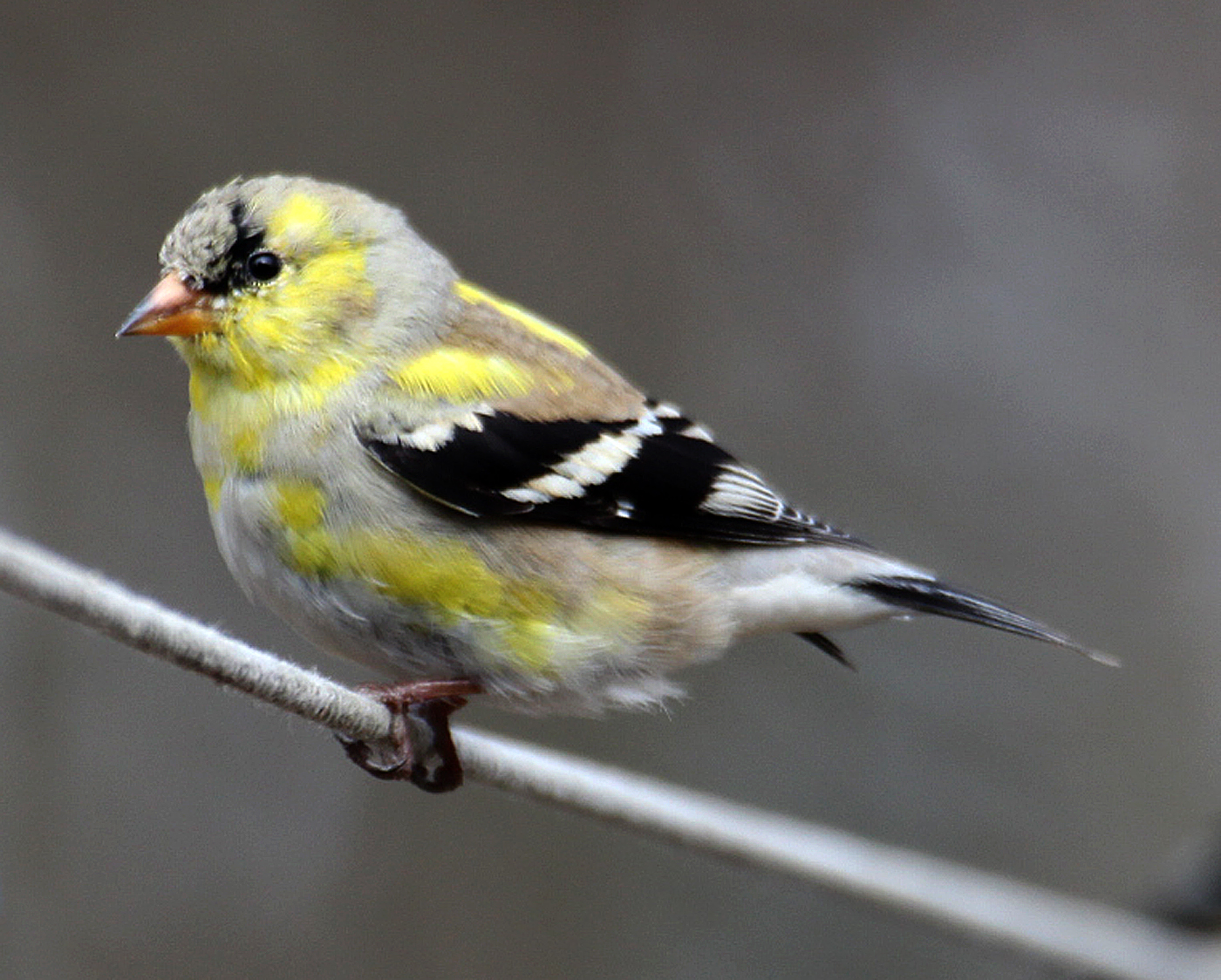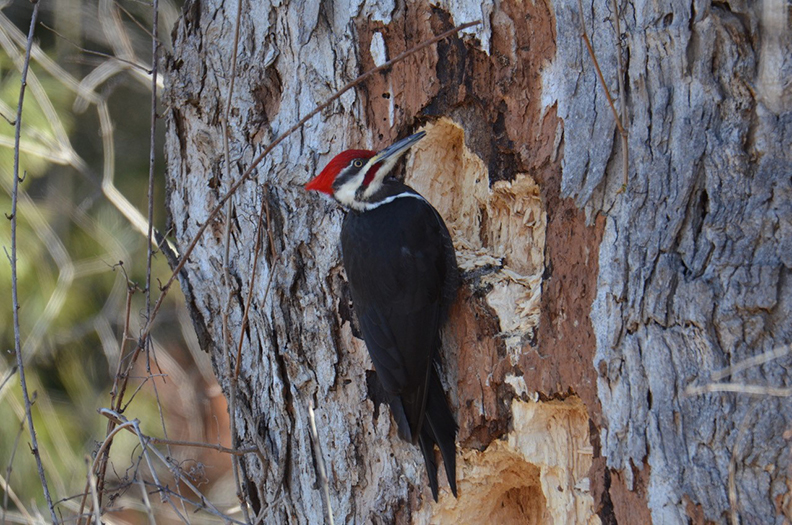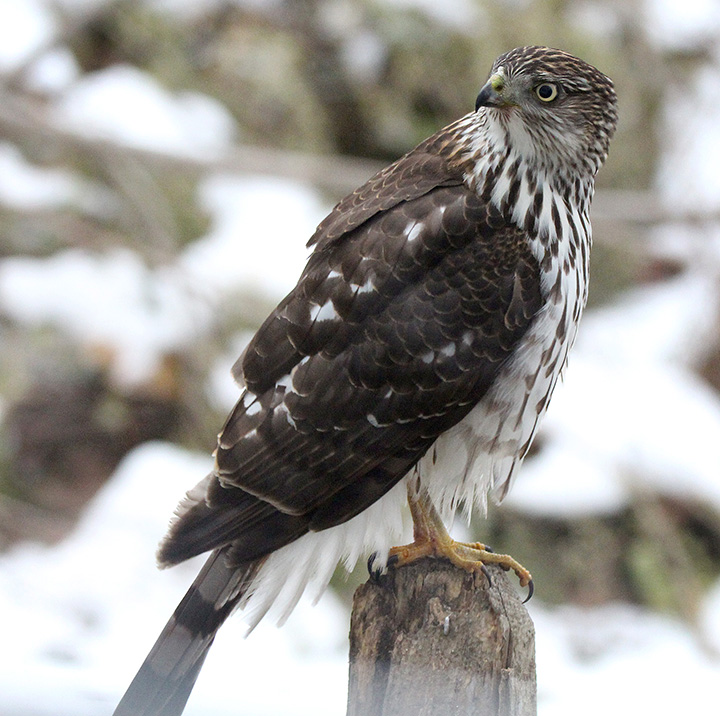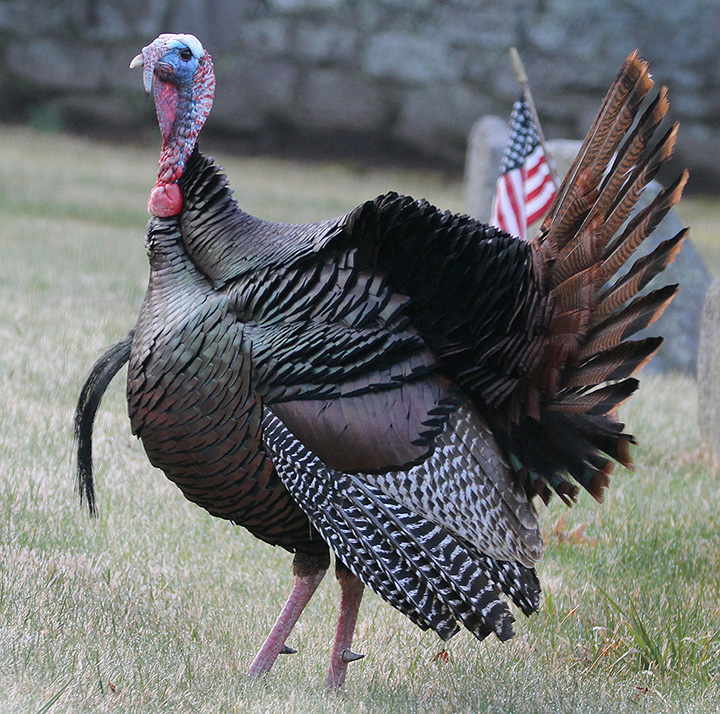American Goldfinches


by Chris Bosak
Weirs Times Columnist
I alluded in last week’s column to a goldfinch being in transitional plumage.
The truth is, in a way, American goldfinches are always in transitional plumage. Unlike most songbirds that look pretty much the same year-round, goldfinches look dramatically different in their breeding and non-breeding plumage. All birds molt (replace) their feathers at least once a year, usually at the end of summer. Most songbirds, whether the molt is done gradually or all at once, look the same at both ends of the molt.
Male American goldfinches are a brilliant yellow in their breeding (summer) plumage. They are a beloved bird and they adorn calendars, magazine covers, bookmarks and conservation promotional materials. It is this brilliant yellow-and-black plumage that makes them desirable fodder as bird models.
However, you rarely see goldfinches in their non-breeding (winter) plumage on magazine covers. The non-breeding plumage is drab and dull – boring if you will. Those who appreciate birds adore them regardless of the season. Those who are looking for flash do not bother with a goldfinch in its non-breeding plumage.
The interesting thing about the transition from winter to summer plumage is that it takes place gradually and you can follow along as the months change. In March, you start to see little splotches of bright yellow on male American goldfinches. Eventually, the splotches get bigger and more numerous and, as I mentioned last week, the birds look as if they have been splattered with bright yellow paint.
Within a few weeks, the males are almost all bright yellow again and then it becomes much easier to tell the males apart from the females. By May, we have our calendar-adorning goldfinches back. They will remain that way through September, but subtle differences in their plumage can be noted as the feathers wear and fade.
By November, they are back in their drab garb and do not catch the flash-seekers eye again until April or May. Don’t let the drab colors fool you, though, as they are new, healthy feathers. It’s interesting to note that during the spring, only the bright body feathers are replaced. Their tail and wing feathers are the ones from the fall molt.
For the longest time, I had trouble attracting goldfinches. I’d get a few here and there, but they were not a reliable species by any means. This winter and spring, for whatever reason, I’ve been practically overrun with goldfinches. I get as many goldfinches as there are perches on my feeder and many more waiting on nearby perches.
Their preferred food is thistle, or Nyjer, seed, which is rather pricey. They will also eat sunflower seeds, but you’ll have better luck offering thistle. What endears goldfinches to me is their readiness to eat wild seeds from garden flowers. I have plenty of photos of goldfinches perched on sunflower or coneflower heads. They aren’t afraid to work for their food.
Goldfinches, of course, have another use for the thistle plant. They breed much later than most songbirds in New England and use down from the thistle flower to soften their nests. It’s too bad thistle plants are considered a weed by most and pulled out of the ground before goldfinches can utilize them.
Yes, the goldfinches are turning bright yellow again. Another welcome sign of spring.
Chris Bosak may be reached at chrisbosak26@gmail.com or through his website at www.birdsofnewengland.com



